no cage
2011
steel mesh, branches, two canary’s,
two grass parakeets and a finch,
painted canvas
Invaliden1, Berlin
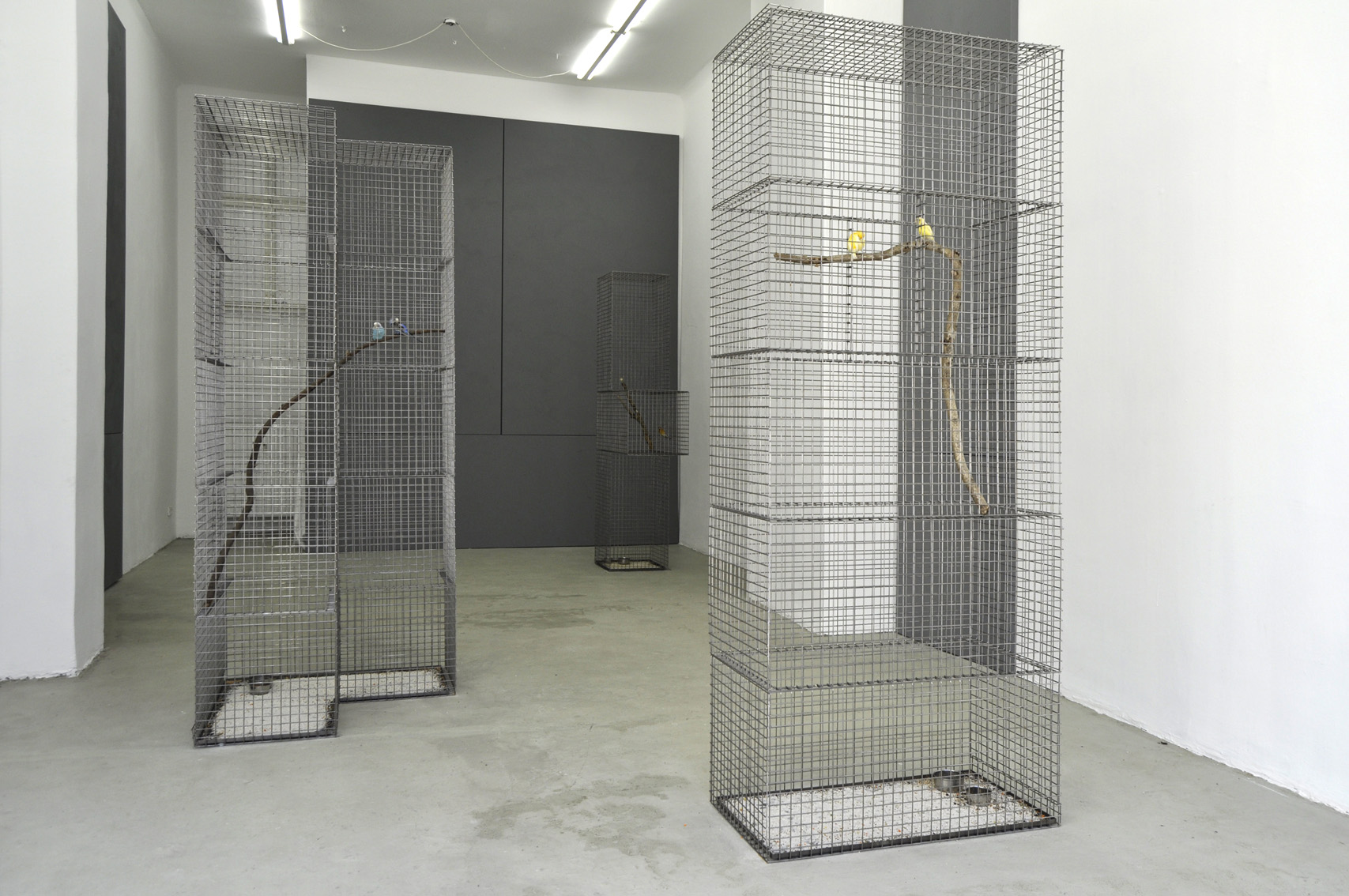
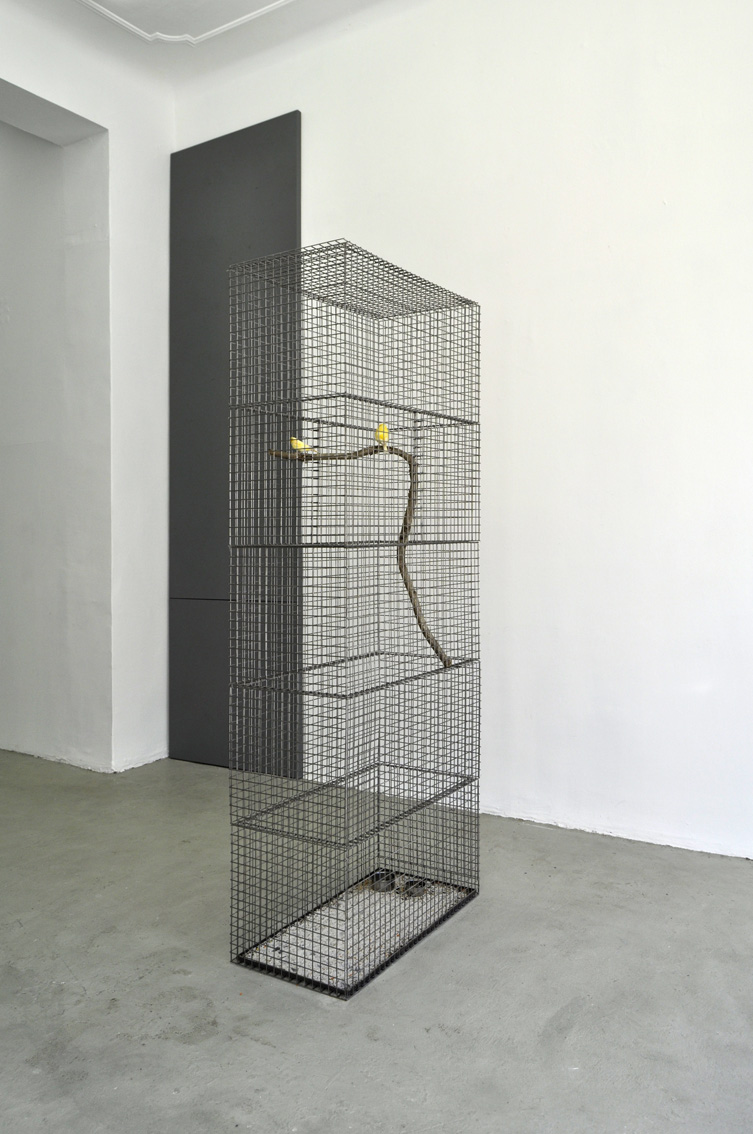
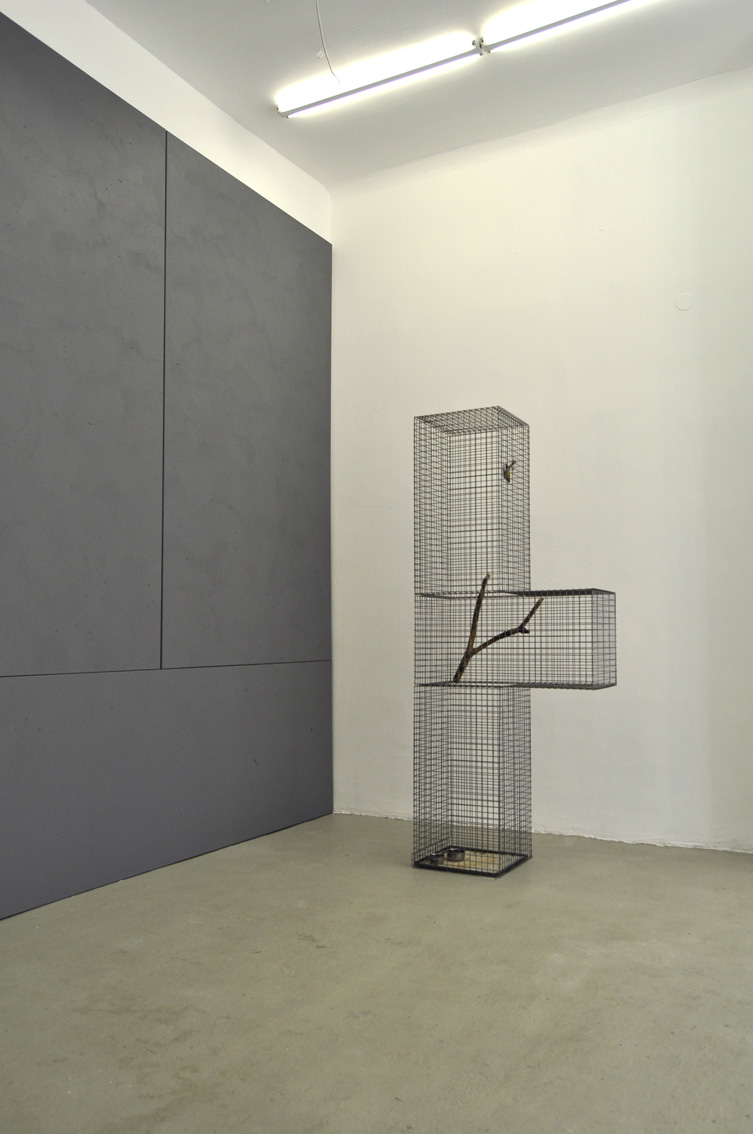
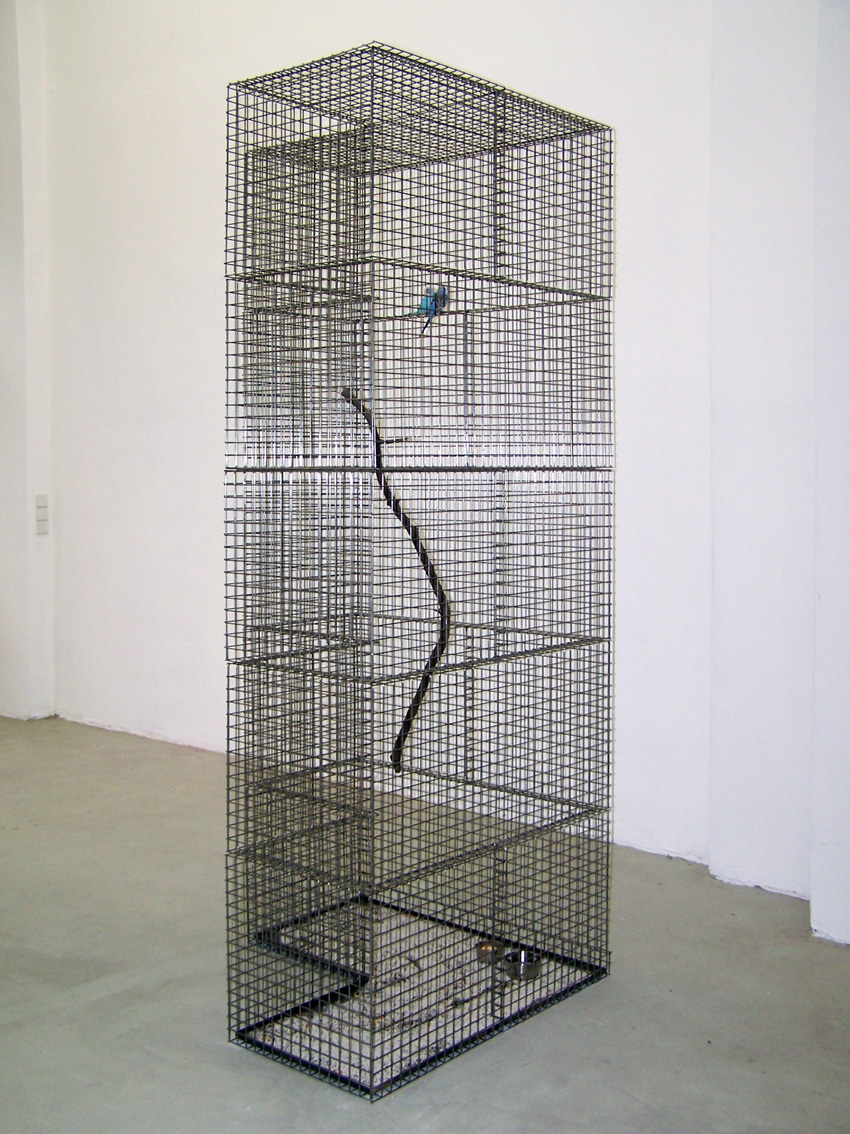
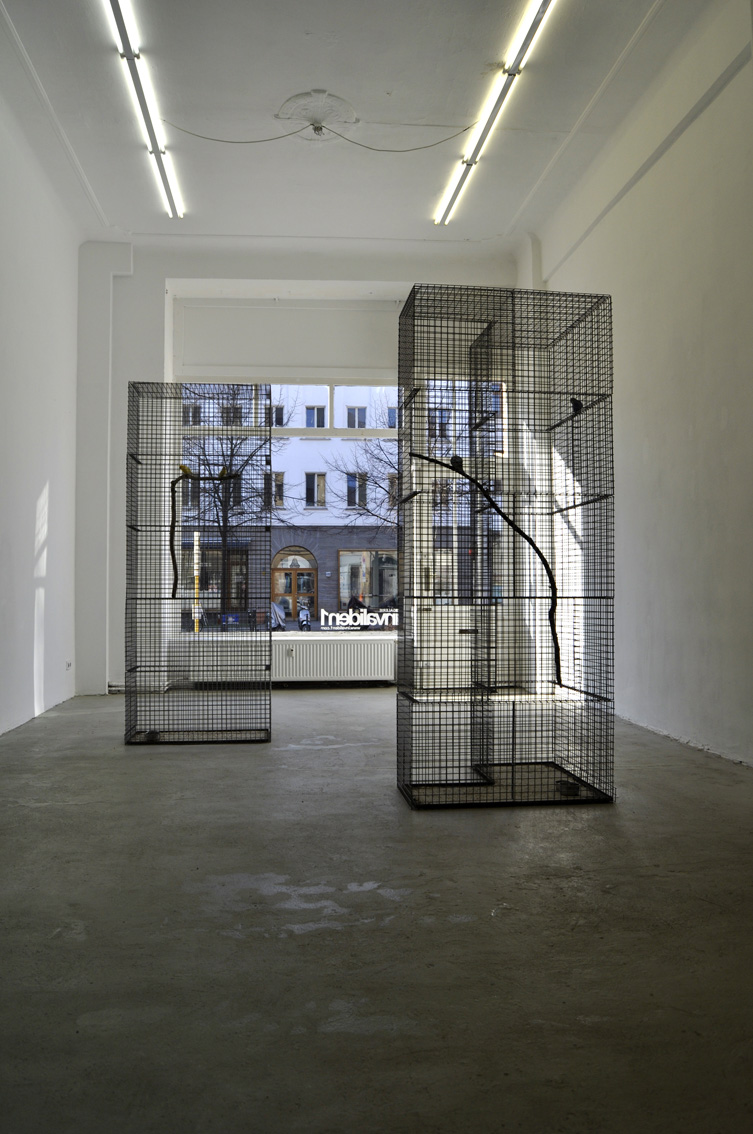
2011
steel mesh, branches, two canary’s,
two grass parakeets and a finch,
painted canvas
Invaliden1, Berlin





PRESSTEXT
no cage
Lucas Lenglet
Opening // friday, jan. 28th // 7 pm
Exhibition // october 9th – november 20th 2010
tues – sat // 12 – 6 pm
Invaliden1 Galerie
Brunnenstraße 22, 10119 Berlin // U8 – Rosenthaler Platz
Invaliden1 is very pleased to present a solo exhibition by Lucas Lenglet. Although based on
architectonical approaches, his oeuvre extends over a range of materials and media including sculpture,
photography and painting. His site-specific project no cage presents one of the leading concerns in the
work from Lucas Lenglet, staged architectural forms as point of departure for reflections.
Lenglet’s interest in the architecture of safety led him to question the boundaries of safety zones, which
necessary entail space-dividers like fences or walls.
His constructions let see a inevitably and clear distinction between the inside and the outside. The space
is parcelled up, keeping the protected one inside. As Foucault pointed out in “Discipline and
Punishment” (1975), the forms of such safety zones are the ‘petrification of unsaid social technologies of
punishment’, whose architectural forms determine inhabitant’s behaviours. The safety zone becomes a
prison, and the prison a safe enclave.
Lucas Lenglet transcribes his own statement on this issue by making use of birdcages. A cage is
basically –spoken with the artist- ‘a combination of four fences that closes off a specific area from it’s
surrounding space. It is physically inaccessible for us, but not for our gaze.
In a way, this turns the cage into a showcase and makes its content exhibited.
It occupies time and space while showing both form and content. On the other hand, a cage easily
blends in with its surroundings by means of its transparency. The transparency could disguise the fact
that the cage actually holds its content in captivity.
No Cage directly relates to previous works by Lenglet, among them his project Voliere for the Rosa-
Luxemburg-Platz in Berlin (2007). In this Lenglet isolated 8 m3 of public space by installing a bright red
birdcage in a neglected shrubbery next to the main square. In reference to a letter Rosa Luxemburg wrote
to Sophie Liebknecht while in prison Lenglet chose seven parakeets to live in the cage for the whole
summer. By creating a beautiful frame for something – the birds in the urban green – which is always there
the artist reflected on the nature of human perception. On general level he raised questions about the
native and the foreign, about the exotic and the indigenous, implying political connotations about human
migration and the laws applied to those seeking asylum or simply a better live.
For invaliden1, Lucas Lenglet created an environment with parts of painted wall-coverings as a hint of
domesticity. Smudged domesticity it is, wiht means of abstract references to the damsk covered walls so
well known from the golden age of Dutch interior painting in the 16th and 17th century that regularly
displayed exotic birds among other riches. Lenglet places three birdcages with basic geometric modular
forms in the gallery, confronting the canvases. The forms could be enlarged architectural models. It is an
architecture for birds.
Lucas Lenglet (Leiden, 1972) is an international artist based in Amsterdam. He has had solo presentations
in places such as Palais de Tokio (2007, Paris), Stedelijk Museum Bureau Amsterdam (Amsterdam, 2008)
or Künstlerhaus Bethanien (2006, Berlin) and he participated in group shows amongst others Why do you
resist?, Pori Art Museum, (2010, Pori, FI), Neue Heimat, Berlinische Galerie (2007, Berlin) and Ideal Cities
– Invisible Cities (Zamosc Poland and Potsdam).
Text: Susanne Prinz / Cristina Navarro